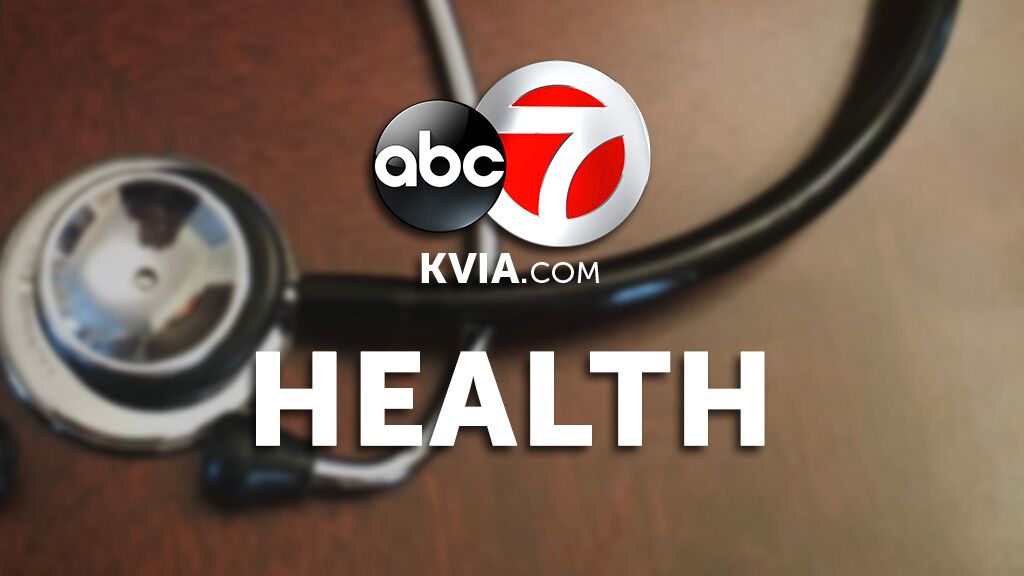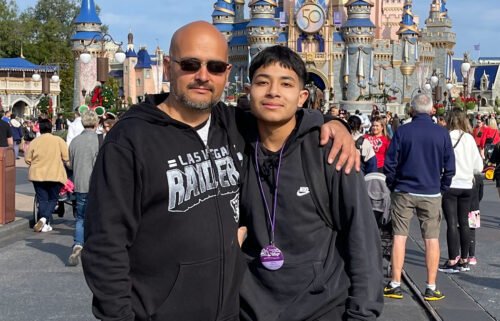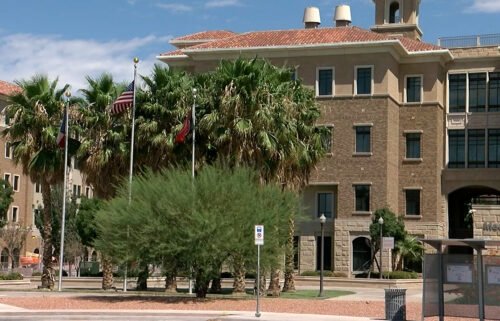New ‘smart skin’ may let you reach out and virtually touch — anyone

Visualize touching your sweetheart’s face on the screen of your laptop and seeing a reaction to your touch in real time, even though you are miles apart. Suddenly, you feel a touch on your face.
Or if you’re a grandparent, imagine making a hugging motion during an internet video call with your grandchild and watching them squirm in delight. Now imagine feeling that child’s sweet kiss on your cheek.
Technology allows us to see and hear each other from almost anywhere in the world, but our devices still can’t give us that kind of one-on-one sense of touch — that proof of human connection.
“Physical touch, human touch, is probably the deepest, most significant emotional connection that you can establish with a loved one or friends,” said nanoengineer John Rogers, a professor of bioengineering at Northwestern University.
For years, science has been scrambling to add tactile sensation to our virtual experiences. Various types of electronic skins have been developed, typically reliant on clunky wired electrodes that provide less than instantaneous response and a lack of two-way feedback.
In a paper published Wednesday in the journal Nature, Rogers and his team at Northwestern report a new wireless and battery-free smart skin that could shift the course of this technology. Through a fast, programmable array of miniature vibrating disks embedded in a soft, flexible material, this smart skin can contour to the body and deliver sensory input — what you’d feel when using it — that Rogers says is quite natural.
“I would say a gentle touch or kind of a stroke, a type of sensation that you might feel if you rub your finger across your skin,” Rogers said.
The applications for such a flexible smart skin are wide: social media, entertainment, virtual reality and video gaming, sensory feedback for amputees, even telemedicine could be given a human touch, the study said. At the office, employees could shake the hand of every businessperson attending a virtual meeting and feel a squeeze in return.
“What’s particularly exciting about their work is how they incorporate wireless power delivery,” said Luke Osborn, a postdoctoral researcher at the Johns Hopkins University Applied Physics Laboratory, who was not involved in the study. “I’m really excited to see how this technology progresses in the coming years.”
Applications for medical purposes
Osborn’s team previously developed a sensory feedback tool called an “e-dermis” that fits over prosthetic hands and mimics nerve endings, allowing amputees to feel pain.
The new smart skin developed by the Northwestern team would add to that technology, allowing amputees “to understand how much force they’re using when they grasp an object as well as how hot or cold the object is,” Rogers said.
“You can also deploy multiple devices at different areas of interest across the body and you can control all of them wirelessly and simultaneously,” he added.
Rogers’ team is motivated by the medical applications of the technology. They are currently working with stroke victims who cannot swallow, using a smart skin to help trigger and time swallows with respiration to avoid choking.
Earlier in the year the team reported on the use of a small bandage to wirelessly monitor a premature baby’s vital signs in the neonatal intensive care unit (NICU), and even after they leave the hospital.
“We can monitor all vital signs,” Rogers said. “Cardiac activity, blood oxygenation, breathing, we can monitor crying, we can monitor motion to determine how restless the baby is, we can get a pretty good surrogate for blood pressure. So we fully reproduce all vital signs that are measured as a standard of care in [a] NICU unit.”
Touching the masses
There are other applications as well. Not only can lovers, grandparents and businessmen reach out and touch people to better communicate, but so could politicians, world figures, and movie and music icons.
Think of your favorite music artist reaching out to touch everyone in the audience during a concert, or even a music video.
“When I see devices that are able to capture the movements of one person and then play them back on someone else, what gets me excited is the idea of social touch and networks of social touch,” said cognitive psychologist Jeremy Bailenson, who directs the Virtual Human Interaction Lab at Stanford University.
Bailenson, who was not involved in the newly published study, has investigated the power of the “virtual handshake” and found that people perceive it as real.
“What we’ve shown in our studies is that this virtual touch is well received. You can actually pull emotion from it,” Bailenson said. “People could very accurately, twice above what chance would predict, understand the other person’s emotion through this virtual reality touch.
“And what my research has shown is that from a psychological kind of perceptual standpoint, people perceive virtual touch in a way that they do physical touch when it comes to emotional gestures,” he continued. “So that’s kind of making the argument that we can make VR touch be equal to actual touch.”
Bailenson also recorded a person’s own handshake and played it back to them along with others. He discovered that we prefer our own handshake to others, and will like and trust that person whose touch mimics our own.
Since touch is a key method we use to establish trust with other people in our lives, Bailenson said, the future application of realistic touch throughout the virtual world is both exciting and potentially concerning.
“We’ve never, ever been able to touch more than one or two people at once with our two hands. Now, all of a sudden, you can hug the world,” Bailenson said. “There’s amazing applications for that. If I’m the Dalai Lama, I can hug the entire world at once.
“But there’s two sides to the coin,” he continued. “If touch causes someone else to like you and now you scale it up, you know this is a politician’s dream, right? Tweak your own handshake to make it tailored to the other person so that it mimics them, [and] shake a million hands at once. Kiss 10 million babies at once. It’s a politician dream.”




